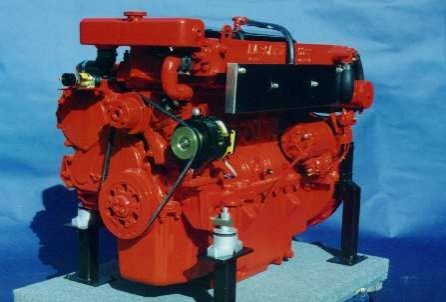Larry M wrote:
*I got an estimate from*a Ford Lehman dealer to do a total rebuild for $9,800.00.* This doesn't include removal or re-installation.
I just heard back from Lugger/Northern Lights to replace our SP135.* Here are the numbers to compare for a rebuild or replacement:
G'day, Lena and Larry.
*
We would have several recommendations for you to consider, and really what it comes down to is your cruising speed expectations along with the required hours of durability, or cruising range either at normal operating RPM, or for extended range operations.
First, visit our web-site,
www.northern-lights, and under Lugger engine models L1064A or L1066T engines copy the brochures, for reference. In addition, for purposes of consumption comparatives, remember that 1 gallon of diesel should produce 20HP at the transmission input shaft, with a 3% estimated parasitic loss in the transmission.
Taking your average fuel consumption of your Lehman Ford, probably somewhere between 2 to 3 gallons per hour, you were using 40-60 HP to cruise your KK-42 between 7-8 knots, and when you compare this to either engine performance, your would be operating your engine at less than 50% of the rated capacity for the engines.
The physical dimensions of the engines will compare very close to your existing Lehman, the L1064A engine would be shorter of course, since it is only a 4 cylinder engine. To elaborate further, both Lugger models begin life as John Deere Industrial engines, then we marinize the engines to suit our requirements which are somewhat different from the standard John Deere Marine engines, also available to you and standard on all current KK models. Since we have been marinizing the Deere engine for 25 years longer than Deere, we think we know something about what is required for our customers, so we continue to use their engine, done our way.
So you will have options, from very limited changes in the scope of supply between your existing engine, 12V, single high amperage alternator, HE cooling, Twin Disc or ZF transmission with a 2 1/2 to 1 reduction gear, wiring harness, panel, wet exhaust elbow, all matching what you have, so it can slip into the engine spaces without any severe compromises. But, what other changes would you wish to make, such as stabilizers, thrusters, dual alternators, drive options for other solutions, and etc, that you would want to incorporate into your repower project?
Pricing will range from $34,500 to $39,000, depending upon the model selected and the transmission requirements, and available accessory options tailored to your requirements.
Fit should be very close to your existing Lehman, and if you wish to receive a quotation, we would first request that your complete the application questionnaire available on the web-site.
I hope that you will continue your interest and respond with a quotation request that results from receiving your questionnaire. You may be directed to one of our offices that may be closer to you, so if an inspection and consultation is necessary, we can accommodate your interest and timing.
Thank you for your interest and we look forward to your response.
Regards, Steve Scholz,
Director, Asia Pacific Marine Market


